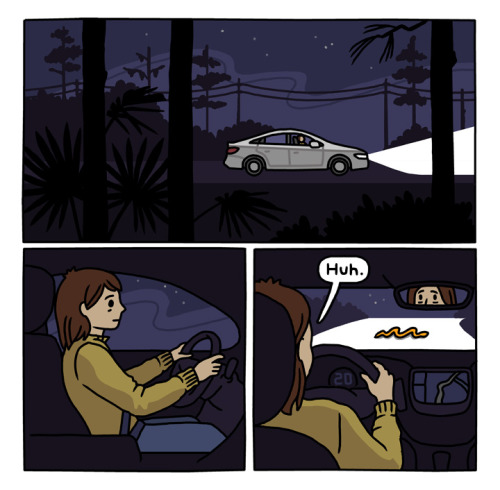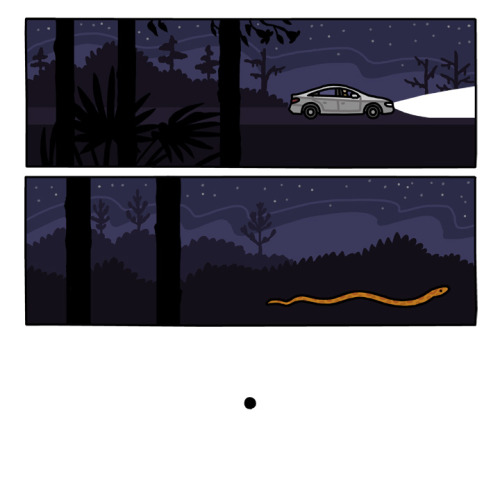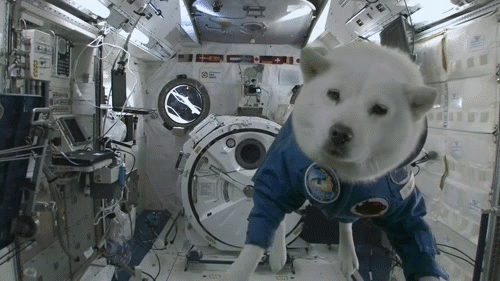Four Evenings A Year, The Setting Sun Aligns Perfectly With Manhattan’s Street Grid, Creating A Breathtaking
Four evenings a year, the setting sun aligns perfectly with Manhattan’s street grid, creating a breathtaking wash of illumination along the cross streets, and tonight is one of them! In this video, Frederick P. Rose Hayden Planetarium Director Neil deGrasse Tyson, who first noted the phenomenon more than a decade ago and coined the term “Manhattanhenge,” explains the phenomenon.
More Posts from Secretagentpeptidebond and Others
That one time my roommate couldn't watch Shane's Asagao Academy stream so I live-texted it to her instead.










@didyouknowshaning‘s asagao stream part 1/part 2

Rosalind Franklin at work on the microscope.
“Conclusion: Big helix in several chains, phosphates on outside, phosphate-phosphate inter-helical bonds disrupted by water. Phosphate links available to proteins.” — Rosalind Franklin
Underlined in typewritten lecture notes, with handwritten annotations, as report (7 Feb 1952) on ‘Colloquium November 1951’. As given in Anne Sayre, Rosalind Franklin and DNA(1975), 128.

A Living Cage
The typical eukaryotic, which basically covers every cell found in animals, plants, fungi, slime molds, protozoa and algae, is a packed place, crammed with a nucleus (itself containing six feet of tightly wound DNA), mitochondria, centrosomes, peroxisomes, lysosomes, ribosomes, endoplasmic reticula (both smooth and rough), actin filaments, Golgi vesicles and more.
All of these cellular elements are in constant action, buzzing with communication and the movement of molecules. The image above, produced by Maria Voigt at the RCSB Protein Data Bank, depicts a clathrin cage, which is essentially a little basket for carrying and moving things around inside cells. Clathrin derives from the Latin clatratus, which means lattice.
Cells have a lot of them. They’re used to transfer nutrients, import signaling receptors, mediate an immune response after sampling the world outside the cell and the clean-up of cellular debris. When not in use, the cages are broken up, to be reassembled when next needed.
The cage above is roughly 50 nanometers wide, a size almost too small to imagine. By comparison, there are 25.4 million nanometers in an inch. A sheet of paper is roughly 100,000 nanometers thick. A single strand of human DNA is 2.5 nanometers in diameter.
The image is one of this year’s winners of the Wellcome Image Awards.







A snake story, based on an experience I had while I was in Florida.
-
 gakittajp liked this · 6 years ago
gakittajp liked this · 6 years ago -
 googleyfish liked this · 6 years ago
googleyfish liked this · 6 years ago -
 bedsidebongwater liked this · 6 years ago
bedsidebongwater liked this · 6 years ago -
 iloveheltondog reblogged this · 6 years ago
iloveheltondog reblogged this · 6 years ago -
 iloveheltondog liked this · 6 years ago
iloveheltondog liked this · 6 years ago -
 beachgirlnikita reblogged this · 6 years ago
beachgirlnikita reblogged this · 6 years ago -
 beachgirlnikita liked this · 6 years ago
beachgirlnikita liked this · 6 years ago -
 potatofacepotato-blog liked this · 8 years ago
potatofacepotato-blog liked this · 8 years ago -
 dyeawkward reblogged this · 8 years ago
dyeawkward reblogged this · 8 years ago -
 dyeawkward liked this · 8 years ago
dyeawkward liked this · 8 years ago -
 todassomosmanas liked this · 8 years ago
todassomosmanas liked this · 8 years ago -
 secretagentpeptidebond reblogged this · 8 years ago
secretagentpeptidebond reblogged this · 8 years ago -
 mexrican liked this · 8 years ago
mexrican liked this · 8 years ago -
 vivrante liked this · 8 years ago
vivrante liked this · 8 years ago -
 cmoore21033 liked this · 8 years ago
cmoore21033 liked this · 8 years ago -
 weesta reblogged this · 8 years ago
weesta reblogged this · 8 years ago -
 weesta liked this · 8 years ago
weesta liked this · 8 years ago -
 pedanther liked this · 8 years ago
pedanther liked this · 8 years ago -
 high-sharen reblogged this · 8 years ago
high-sharen reblogged this · 8 years ago -
 zerocaloriegoodie liked this · 8 years ago
zerocaloriegoodie liked this · 8 years ago -
 geckospeaks liked this · 8 years ago
geckospeaks liked this · 8 years ago -
 hhertzof reblogged this · 8 years ago
hhertzof reblogged this · 8 years ago -
 hhertzof liked this · 8 years ago
hhertzof liked this · 8 years ago -
 four4girls liked this · 8 years ago
four4girls liked this · 8 years ago -
 phredman liked this · 8 years ago
phredman liked this · 8 years ago -
 msshelleysmith reblogged this · 8 years ago
msshelleysmith reblogged this · 8 years ago -
 msshelleysmith liked this · 8 years ago
msshelleysmith liked this · 8 years ago -
 firelakie reblogged this · 8 years ago
firelakie reblogged this · 8 years ago -
 firelakie liked this · 8 years ago
firelakie liked this · 8 years ago -
 eatsyouthinking reblogged this · 8 years ago
eatsyouthinking reblogged this · 8 years ago -
 udaitaxim liked this · 8 years ago
udaitaxim liked this · 8 years ago -
 laughingacademy reblogged this · 8 years ago
laughingacademy reblogged this · 8 years ago -
 laughingacademy liked this · 8 years ago
laughingacademy liked this · 8 years ago -
 srftoy liked this · 8 years ago
srftoy liked this · 8 years ago -
 ummx2 liked this · 8 years ago
ummx2 liked this · 8 years ago -
 amazinglyamy reblogged this · 8 years ago
amazinglyamy reblogged this · 8 years ago -
 odd-brava liked this · 8 years ago
odd-brava liked this · 8 years ago -
 saotome-michi liked this · 8 years ago
saotome-michi liked this · 8 years ago -
 hyperblend liked this · 8 years ago
hyperblend liked this · 8 years ago -
 thisseemslikeabadidea liked this · 8 years ago
thisseemslikeabadidea liked this · 8 years ago -
 wordsparks liked this · 8 years ago
wordsparks liked this · 8 years ago -
 shut-up-ari reblogged this · 8 years ago
shut-up-ari reblogged this · 8 years ago -
 shut-up-ari liked this · 8 years ago
shut-up-ari liked this · 8 years ago







